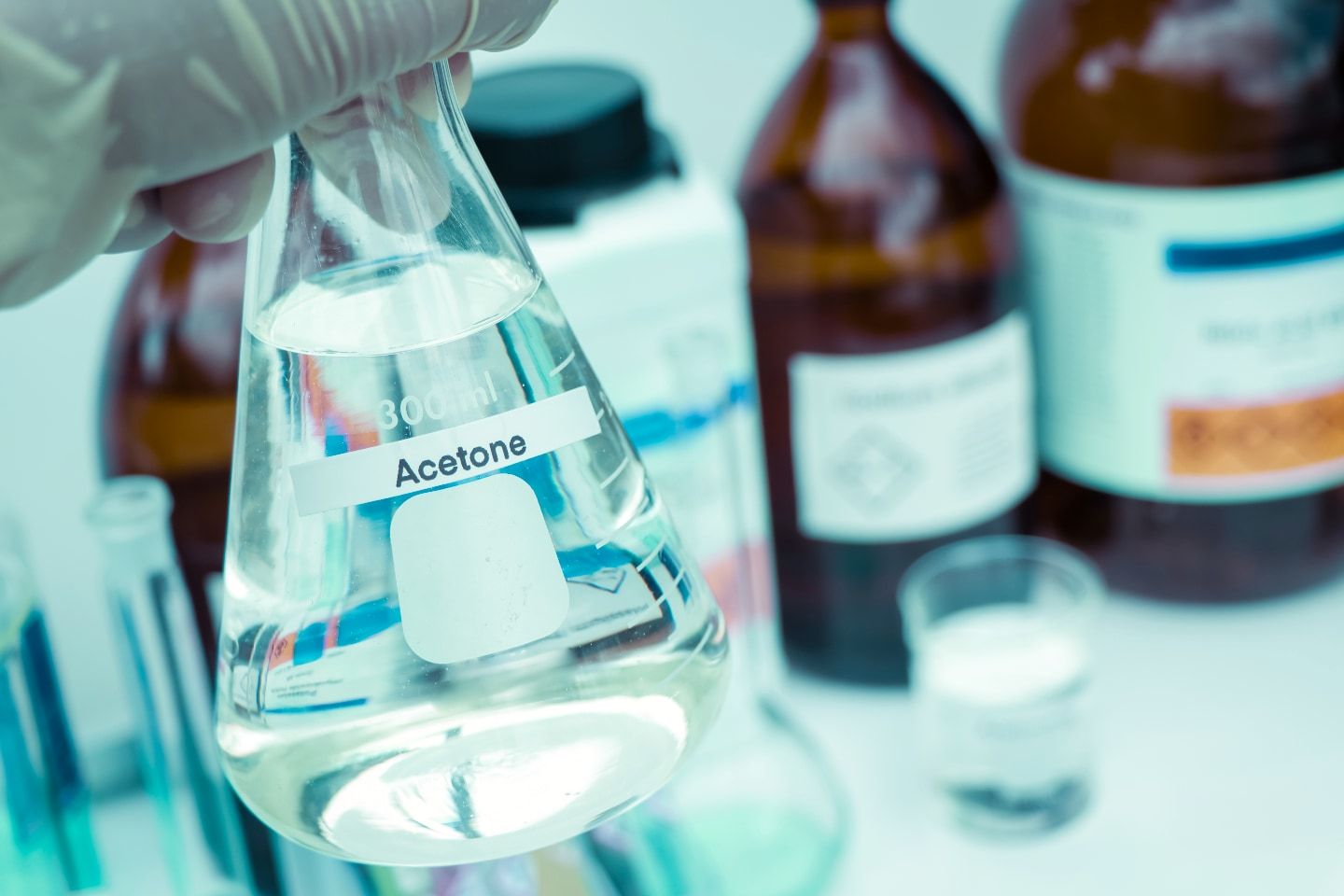-
CAS67-64-1
-
Structural formula
C₃H₆O
Cleaning of acetone exhaust air
What is acetone?
Acetone is an important solvent that is used in many industrial processes. It belongs to the group of ketones, a class of organic compounds. Acetone is produced in the manufacture of plastics, paints, varnishes and other chemical products. Due to its wide range of applications, it plays an important role in the chemical industry.
Origin
Acetone is mainly produced industrially, particularly in the manufacture of plastics, paints and varnishes. It is also found in many cleaning agents and solvents. It is also produced in small quantities in the human body during the burning of fat.
Recognition
Acetone is colourless and has a sweet, slightly fruity smell. It evaporates quickly at room temperature and is highly flammable. In contact with the skin, acetone can cause dryness and irritation, and at high concentrations in the air it can irritate the eyes and respiratory tract.
Limit values
The Technical Instructions on Air Quality Control (TA-Luft) specify limit values for acetone emissions in order to protect people and the environment.
Workplace exposure limit value (WEL): In the EU, the OEL for acetone is 500 ppm (1200 mg/m³) over an average exposure time of 8 hours. This value indicates the average concentration of a substance in the air at the workplace at which no adverse health effects are to be expected.
Hazards
Health: Short-term exposure to acetone may cause headaches, dizziness and irritation of the eyes and respiratory tract. Prolonged or high exposure can cause more serious health effects such as nerve damage.
Environmental: Acetone is a volatile substance that can affect air quality. If it enters bodies of water, it can disrupt the ecosystem.
Economic damage: Acetone can corrode materials and cause corrosion, which can lead to damage to machinery and equipment.
The oxytec Purification Technology
For many organic pollutants, we offer energy-saving and clean technologies for neutralisation, which we combine in multi-stage plants. In order to achieve a reduction below the limit values, not only the dimensioning of the respective purification stage but also the sequence of the technologies is decisive, as they have different physical effects on the molecules. Below we present some of our purification modules.
CWA
Alternative Technologies
Other technologies for acetone reduction include simple filtration systems and chemical scrubbers. However, these often have disadvantages such as high energy consumption, insufficient cleaning efficiency, large space requirements, long lead times, and high investment costs.
Advantages of the oxytec Solution
- Very low maintenance requirements
- High efficiency in pollutant reduction
- Low energy consumption
- Compact design requiring little space
- Short installation and commissioning times
- Cost-efficient compared to alternative technologies
